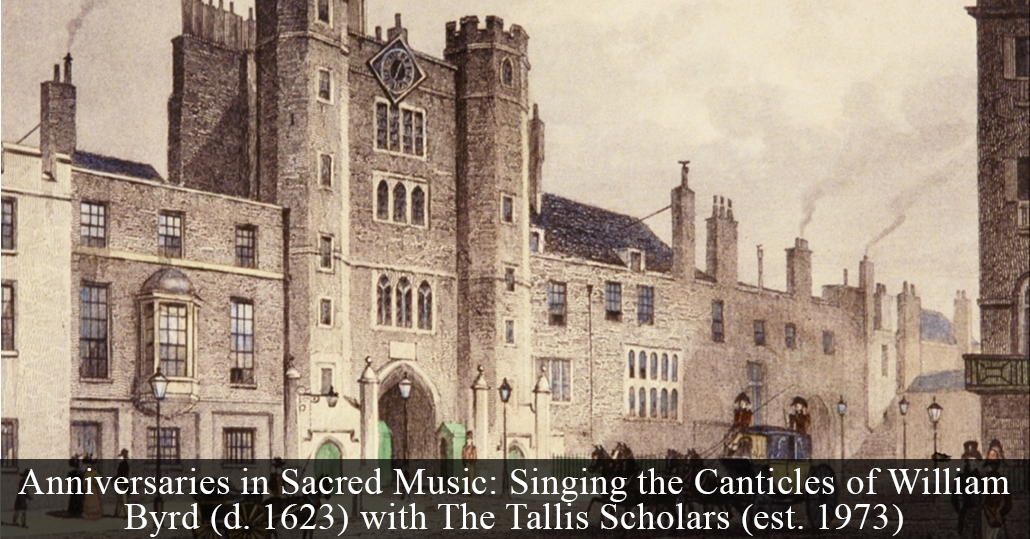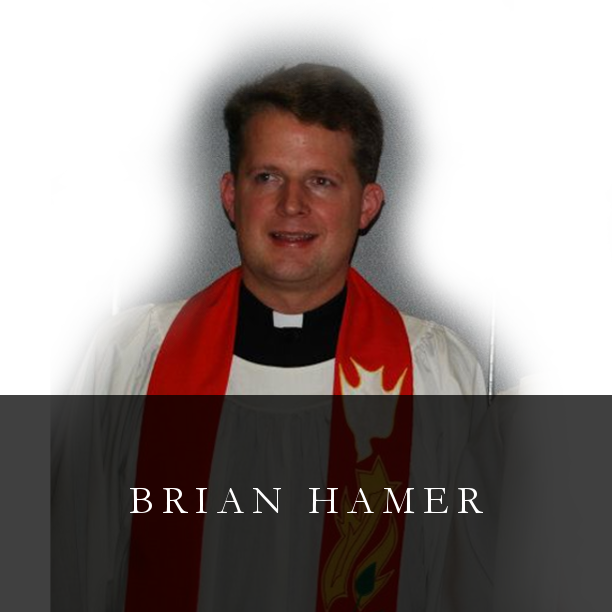– Peter Phillips
The term “Great Service” appears to hail from E. H. Fellowes, following his discovery in 1914 of some church music by Byrd, which begged for proper cataloguing. And yet, as Richard Turbet notes, during Byrd’s lifetime “there was no category of musical composition called ‘Great Services’ . . . [the term] should only be used adjectively,” that is, as a descriptor of substantive collections of sacred music (The Musical Times 131:1767, p. 277). In practical terms, the term as we know it today indicates a compilation of sacred pieces—Venite, Te Deum, Benedictus, Kyrie (omitted in this column), [Nicene] Creed, Magnificat, and Nunc Dimittis—that can be performed as needed, with the understanding that there is no liturgical service that calls for all of them at once.
In his magisterial work, William Byrd: Gentleman of the Chapel Royal, John Harley summarizes the enduring value of Byrd’s Great Service:
| [It] represents the culmination of a process begun in earlier services and paralleled in a number of motets, namely the relaxation of the homophonic writing of earlier Anglican music to a point where Byrd could move with ease between homophony and complex polyphony (pp. 304–305). |
The Venite is named for the opening phrase of Psalm 95 “Oh, come [venite], let us sing unto the Lord.” Lutherans know it best as the appointed Psalm for Matins. Notice how Byrd alternates fluently among various textures and voicings, from the opening measures for four treble voices to more complex textures for all voices. The designations “Verse” and “Full” suggest alternation between small and large ensembles. Similarly, “Can.” and “Dec.” indicate the cantor’s side of the choir loft (to your right, from the perspective of the worshipper) and the deacon’s side (to your left), respectively, facilitating antiphonal singing.
Te Deum
The Te Deum is the preeminent hymn of Christendom after the closing of the New Testament Canon. Its authorship is shrouded in obscurity, but its place in our sung confession (Luther called it the “fourth creed” of Christianity) is second to none. Lutherans know it best as the canticle at Matins and secondarily as the post-Communion canticle on festival Sundays. Notice how Byrd makes full use of the resources available to English cathedral choirs and elaborates them to splendid effect: two sopranos, two countertenors (male altos, in modern terms), tenors and basses, dispersed in two choirs in the chancel. Do you agree that the variety in voicing, combined with the lack of repetition in the text, make the work seem significantly shorter than its actual length of nine and a half minutes?
Benedictus
Zechariah’s hymn was sung in praise to God upon hearing the good news that all of Israel was reduced to two pregnancies (Luke 1:68-79). Lutheran church musicians might utilize Byrd’s setting as a choral canticle for Matins, perhaps with organ doubling for accessibility for the volunteer church choir. Notice how Byrd departs from the precedent of not repeating text at the phrase, “As He spake by the mouth of His holy prophets,” depicting a company of prophets. It is as if Byrd is saying, “The promise of the ages has come, just as it is written in the prophet’s sacred page.” Also notice how the Tallis Scholars always sing two singers to a part with the microphone placed close to the singers, resulting in superb blend, generally transparent musical textures, and the flexibility to “ride the wave” of each musical line.
Creed
“Credo” in this case means the Nicene Creed, that is, the trinitarian confession of faith that was by and large developed at the Council of Nicaea in AD 325. Its inclusion in the Great Service is a bit surprising because its place in the entire liturgy of the West (Roman, Lutheran, and Anglican) is as a response to the Gospel Lesson the Mass. But its use here is easily explained by the nature of the Great Service as a compilation of sacred works for Protestant worship. The relatively short length of Byrd’s setting (just shy of five and a half minutes in this performance) is surprising, but is easily explained by Byrd’s (1) lack of textual repetition and (2) ability to paint the text (e.g., ascending lines for the resurrection and ascension and descending lines for the incarnation and crucifixion) without great musical clutter or elaboration.
Magnificat
The Magnificat and Nunc Dimittis are probably the most prominent and beloved texts of the Anglican liturgy due to their regular use at Evensong. Indeed, their place at Evensong (they are sung adjacently after the first scripture lesson) has created a vast treasury of settings known simply as the “Short Service,” that is, sets of the Magnificat, Nunc Dimittis, and versicles for Evensong. Mary’s hymn (Luke 1:46-55) lends itself to Byrd’s resources and techniques, allowing leaner textures for the first-person texts (“My soul,” “my spirit,” etc.) and fuller voicing for corporate texts (“throughout all generations,” “as He spoke to our fathers,” etc.). Notice how sensitive the Tallis Scholars are to the cadence at the words “all generations,” a trait that has remained constant throughout their remarkable fifty-year history.
Nunc Dimittis
This canticle is the hymn of Simeon, his expression of sublime joy at the appearance of the Christ child and a word of comfort as he approaches his own death (Luke 2:29-32). The sense of contemplation, fulfillment and quiet joy is present throughout Byrd’s setting of the biblical text, complemented by more textual repetition than any other work in the Great Service. Notice how he uses five or six voices throughout the work, avoiding the fuller textures of the Te Deum. The joy climaxes at the words “and ever shall be,” before settling to a serene and sensitive final cadence. This work would have been especially fitting at the Chapel Royal at St. James’s Palace (please see the image above), where Byrd was a Gentlemen and where occasional services for royalty called for newly-commissioned works.
Writing in Grove Music Online, Joseph Kerman summarizes Byrd’s remarkable gifts as a composer, which you, the listener, have just heard:
| One admires most, perhaps, his manifold ways of moulding a phrase, a period, or a total piece. Line, motif, counterpoint, harmony, texture, and figuration can all be brought into play, and they are brought not singly but in ever new combinations. |
| I have found there is such a power hidden away and stored up in those words [of Scripture] that—I know not how—to one who meditates on divine things, pondering them with detailed concentration, all the most fitting melodies come as it were of themselves, and freely present themselves when the mind is alert and eager. – as quoted in Choral Journal 47:6, p. 8 |
| For just as in the art of construction it would be base to fashion a rough work out of a very precious material, so too nothing surely will be fitting for the Sacred sentences [of the Divine liturgy] in which are sung the praises of God himself and the citizens of heaven except some heavenly harmony, or the extent that we can attain it. – as quoted in Choral Journal 47:6, p. 8 |



 RSS Feed
RSS Feed
